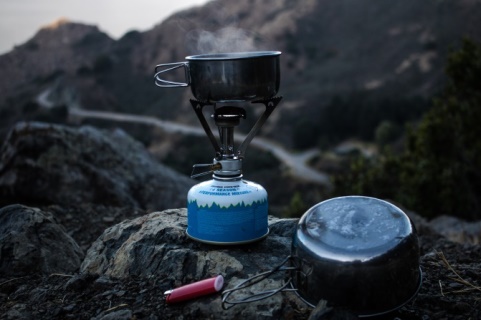With the ongoing effect of climate change causing unpredictable weather in our city, now more than ever we are encouraging customers to be prepared in the case of emergencies. Reflecting on recent events, we wanted to encourage everyone to learn from the past and become more prepared for the future, no matter what season.
To make it simple, we’ve created an easy checklist to follow for assembling a well-stocked emergency kit.
Getting started
When creating an emergency kit, it is good to be mindful of portability. Storing your items in the appropriate container is more important that you may realize. In some situations, you may need to evacuate or be confined to a smaller section of your home, so try and build an emergency kit that is easy to move and is all in one place. To do so, use a large plastic tub (Bonus: get one with wheels to keep your items dry and for ease of transport). Or if you have any old suitcases lying around, you can save money by using those instead.
Once you decide on a container, browse through the supply list below and begin by checking off the items that you already have. You’d be surprised at how much of the list you might already have lying around your home. Gather it all together and organize into the appropriate categories. After doing so, head to the nearest dollar store or hardware store to begin your shopping.
Emergency Kit Checklist
Housekeeping
 Cash – Include small bills and coins.
Cash – Include small bills and coins.- Spare keys – Car, house, boat, you name it.
- Emergency plan and contact info – check out our outage safety page.
- Important document checklist – In case you need to evacuate your home, make sure to create a list of all important documentation you will need to bring with you. This list should include passports, birth certificates, SIN cards, etc.
- Electronics
- Phone charger / battery packs / solar charger – For many of us, our phones are like life-lines, so it’s important to plan ahead for keeping them charged.
- Flashlights – In addition to keeping these in your kit, consider storing extras around the house. (Bedside table, bathroom, basement, kitchen, etc.)
- Batteries – Consider having a pack of some common battery sizes on hand.
- Battery or crank powered radio – If cell service is lost, a radio will help you to stay up to date on news.
Kitchen/Food
 Water – If you can, consider storing at least 2L per person per day (1 week supply).
Water – If you can, consider storing at least 2L per person per day (1 week supply).- Canned food / non-perishables – We know…these don’t always sound appetizing. But simple foods like beans, beef jerky, trail mix, and canned fruit don’t require water or cooking, and will keep fresh for a long time.
- Can opener – Let’s just say, things will get a little more complicated with the above items if you forget this one.
- Camp stove and fuel – During an outage, prioritize eating the food in your fridge/freezer before diving into the non-perishables. Once power is lost, a full unopened freezer will keep food frozen for about 48 hours, a freezer that is half full will keep food frozen for about 24 hours, and an unopened refrigerator will keep food cold for about 4 hours. Once frozen meat starts thawing, be sure to cook it before it reaches room temperature. BBQ party anyone? Just remember to set up your stove outdoors in a well ventilated area.
- Cutlery set / sharp knife – Consider purchasing a folding lock-back knife, they’re multi-use and fold up for safe storage.
Health and Hygiene
- Medications – Keep an updated stash of at least one weeks’ worth of any important medications or painkillers.
- First aid kit – Invest in a high quality first aid kit like St. John Ambulance or Canadian Red Cross.
- Toilet paper – Keep at least 2 rolls handy. Need we say more?
- Essential items – We all have certain items or supplies that we can’t live without. This could include: Infant formula, diapers, wipes, pet food, oxygen tanks, medical accessories etc.
- N-95 masks – These can be purchased from any pharmacy.
- Household chlorine bleach – With proper measurements, bleach can be used to disinfect water, clean surfaces and sterilize tools. (Print out directions on how to dilute the solution safely.)
Tools/supplies
 Duct tape
Duct tape- Rope/string
- Scissors
- Pen, marker, notebook
- Multi tool
- Candles, waterproof matches, lighter
- Tarp
- Garbage bags
- Whistle
Comfort
- Warm blankets / Compact sleeping bags / emergency blankets
- Toques, scarves, gloves, jackets, socks – When the power is out and you have no heating, bundle up to maintain body heat.
- Hand/foot warmer packs
- Towels – Bath and hand towels can have many different uses.
- A deck of cards – Cards are a compact and fun way to keep your family busy while waiting for the power to be restored.
Other things to consider:
- Cooler bags and freezer packs
- Once you have gathered all your supplies, group like items together and store in freezer bags to keep everything dry.
After gathering all your necessary items, store them on a shelf in an easy to access location. Have free shelf space and some time to spare? Go one step further and create a stockpile of canned goods and bottled water in addition to the amount stored in your kit.
Happy kit planning! We hope these items help you and your family feel prepared for nearly any emergency!